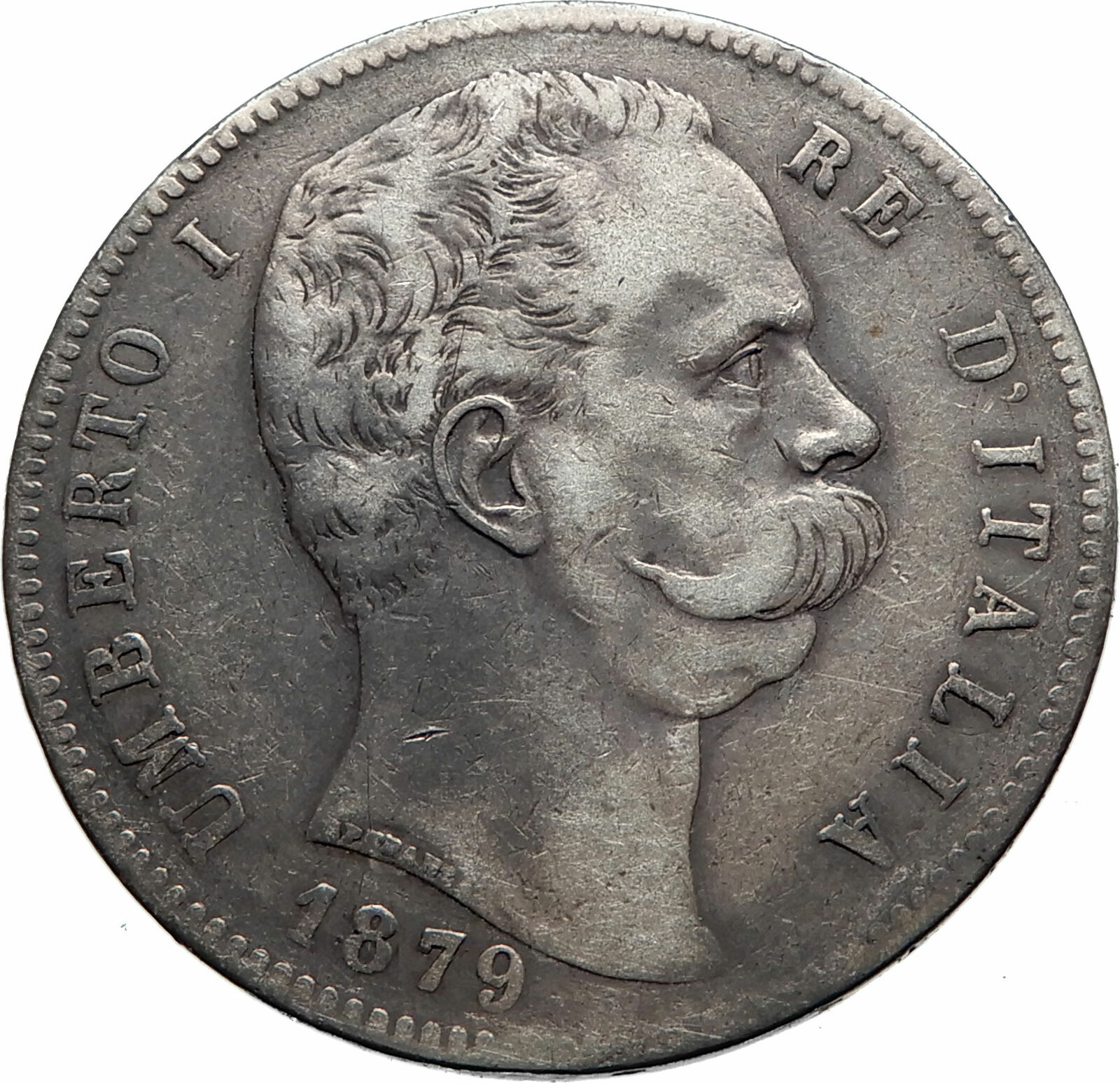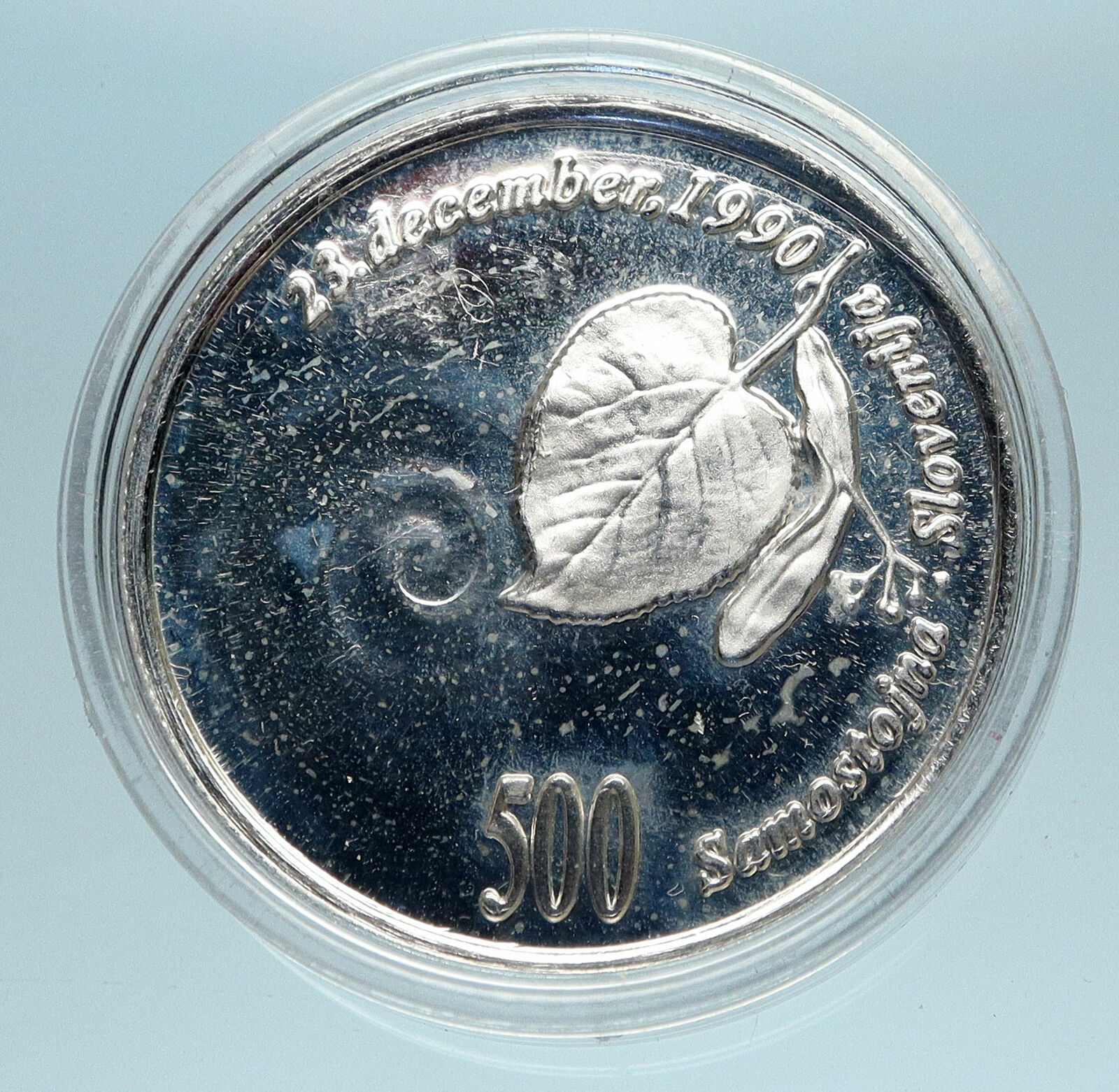|
Slovakia – Fifth Anniversary of the Slovak Republic
1944 Silver 50 Korun 34mm (16.47 grams) 0.700 Silver (0.3713 oz. ASW)
Reference: KM# 10
SLOVENSKÁ REPUBLIKA 50 Ks, Slovak shield.
VERNÍ SEBE – SVORNE NAPRED 1939·14·III·1944, Slovak President Jozef Tiso facing right.
You are bidding on the exact item pictured, provided with a Certificate of Authenticity and Lifetime Guarantee of Authenticity.
Jozef Tiso (13 October 1887 -18 April 1947) was a Slovak politician and Roman Catholic priest who governed the Slovak Republic, a client state of Nazi Germany during World War II, from 1939 to 1945. After the war, he was executed in 1947 for war crimes and crimes against humanity in Bratislava.
Born in 1887 to Slovak parents in Bytča, then part of Austria-Hungary, Tiso studied several languages during his school career, including Hebrew and German. He was introduced to priesthood from an early age and helped combat local poverty and alcoholism in what is now Slovakia. He joined the Slovak People’s Party (Slovenská ľudová strana) in 1918 and became party leader in 1938 following the death of Andrej Hlinka. When Nazi Germany seized Czechoslovakia in 1938, the German authorities founded the Slovak Republic out of Czechoslovakia, while the Czech portion became the Protectorate of Bohemia and Moravia. Tiso became the Republic’s President in 1939.
Tiso collaborated with Germany in deportations of Jews, deporting many Slovak Jews to extermination and concentration camps in Germany, while some Jews in Slovakia were murdered outright. An anti-fascist partisan insurgency was waged against Tiso, culminating in the Slovak National Uprising in 1944, which was suppressed by German authorities with many of its leaders executed.
When the Soviet Red Army overran the last parts of western Slovakia in April 1945, Tiso fled to Austria and then Germany where American troops arrested him and then had him extradited back to the reformed Czechoslovakia, where he was convicted of treason against the state, treason against the uprising and collaboration, and then executed by hanging in 1947 and buried in Bratislava.
Slovak Republic (Slovak: is a landlocked country in Central Europe. It is bordered by Poland to the north, Ukraine to the east, Hungary to the south, Austria to the west, and the Czech Republic to the northwest. Slovakia’s territory spans about 49,000 square kilometres (19,000 sq mi) and is mostly mountainous. The population is over 5.4 million and consists mostly of Slovaks. The capital and largest city is Bratislava, second largest city is Košice. The official language is Slovak.
The Slavs arrived in the territory of present-day Slovakia in the 5th and 6th centuries. In the 7th century, they played a significant role in the creation of Samo’s Empire and in the 9th century established the Principality of Nitra, which was later conquered by the Principality of Moravia to  establish Great Moravia. In the 10th century, after the dissolution of Great Moravia, the territory was integrated into the Principality of Hungary, which would become the Kingdom of Hungary in 1000.. In 1241 and 1242, much of the territory was destroyed by the Mongols during their invasion of Central and Eastern Europe. The area was recovered largely thanks to Béla IV of Hungary who also settled Germans which became an important ethnic group in the area, especially in what are today parts of central and eastern Slovakia. After World War I and the dissolution of the Austro-Hungarian Empire, the Czechoslovak National Council established Czechoslovakia (1918-1939). A separate (First) Slovak Republic (1939-1945) existed during World War II as a totalitarian, clero-fascist one-party client state of Nazi Germany. At the end of World War II, Czechoslovakia was re-established as an independent country. A coup in 1948 ushered in a totalitarian one-party state under the Communist regime during whose rule the country existed as a satellite of the Soviet Union. Attempts for liberalization of communism in Czechoslovakia culminated in the Prague Spring, which was crushed by the Warsaw Pact invasion of Czechoslovakia in August 1968. In 1989, the Velvet Revolution ended the Communist rule in Czechoslovakia peacefully. Slovakia became an independent state on 1 January 1993 after the peaceful dissolution of Czechoslovakia, sometimes known as the Velvet Divorce. establish Great Moravia. In the 10th century, after the dissolution of Great Moravia, the territory was integrated into the Principality of Hungary, which would become the Kingdom of Hungary in 1000.. In 1241 and 1242, much of the territory was destroyed by the Mongols during their invasion of Central and Eastern Europe. The area was recovered largely thanks to Béla IV of Hungary who also settled Germans which became an important ethnic group in the area, especially in what are today parts of central and eastern Slovakia. After World War I and the dissolution of the Austro-Hungarian Empire, the Czechoslovak National Council established Czechoslovakia (1918-1939). A separate (First) Slovak Republic (1939-1945) existed during World War II as a totalitarian, clero-fascist one-party client state of Nazi Germany. At the end of World War II, Czechoslovakia was re-established as an independent country. A coup in 1948 ushered in a totalitarian one-party state under the Communist regime during whose rule the country existed as a satellite of the Soviet Union. Attempts for liberalization of communism in Czechoslovakia culminated in the Prague Spring, which was crushed by the Warsaw Pact invasion of Czechoslovakia in August 1968. In 1989, the Velvet Revolution ended the Communist rule in Czechoslovakia peacefully. Slovakia became an independent state on 1 January 1993 after the peaceful dissolution of Czechoslovakia, sometimes known as the Velvet Divorce.
Slovakia is a high-income advanced economy with a very high Human Development Index, a very high standard of living.
|





 establish Great Moravia. In the 10th century, after the dissolution of Great Moravia, the territory was integrated into the Principality of Hungary, which would become the Kingdom of Hungary in 1000.. In 1241 and 1242, much of the territory was destroyed by the Mongols during their invasion of Central and Eastern Europe. The area was recovered largely thanks to Béla IV of Hungary who also settled Germans which became an important ethnic group in the area, especially in what are today parts of central and eastern Slovakia. After World War I and the dissolution of the Austro-Hungarian Empire, the Czechoslovak National Council established Czechoslovakia (1918-1939). A separate (First) Slovak Republic (1939-1945) existed during World War II as a totalitarian, clero-fascist one-party client state of Nazi Germany. At the end of World War II, Czechoslovakia was re-established as an independent country. A coup in 1948 ushered in a totalitarian one-party state under the Communist regime during whose rule the country existed as a satellite of the Soviet Union. Attempts for liberalization of communism in Czechoslovakia culminated in the Prague Spring, which was crushed by the Warsaw Pact invasion of Czechoslovakia in August 1968. In 1989, the Velvet Revolution ended the Communist rule in Czechoslovakia peacefully. Slovakia became an independent state on 1 January 1993 after the peaceful dissolution of Czechoslovakia, sometimes known as the Velvet Divorce.
establish Great Moravia. In the 10th century, after the dissolution of Great Moravia, the territory was integrated into the Principality of Hungary, which would become the Kingdom of Hungary in 1000.. In 1241 and 1242, much of the territory was destroyed by the Mongols during their invasion of Central and Eastern Europe. The area was recovered largely thanks to Béla IV of Hungary who also settled Germans which became an important ethnic group in the area, especially in what are today parts of central and eastern Slovakia. After World War I and the dissolution of the Austro-Hungarian Empire, the Czechoslovak National Council established Czechoslovakia (1918-1939). A separate (First) Slovak Republic (1939-1945) existed during World War II as a totalitarian, clero-fascist one-party client state of Nazi Germany. At the end of World War II, Czechoslovakia was re-established as an independent country. A coup in 1948 ushered in a totalitarian one-party state under the Communist regime during whose rule the country existed as a satellite of the Soviet Union. Attempts for liberalization of communism in Czechoslovakia culminated in the Prague Spring, which was crushed by the Warsaw Pact invasion of Czechoslovakia in August 1968. In 1989, the Velvet Revolution ended the Communist rule in Czechoslovakia peacefully. Slovakia became an independent state on 1 January 1993 after the peaceful dissolution of Czechoslovakia, sometimes known as the Velvet Divorce. 




